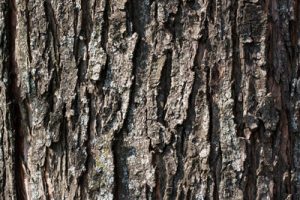VTT: wood could be an ingredient
 Xylan, fibrillated cellulose and lignin are wood-derived polymers that could be used for improving the texture and reducing the energy content of food products, according to VTT Technical Research Centre of Finland, who believe that wood-derived ingredients could be utilised in the manufacture of products such as yoghurt, baked goods and meat products.
Xylan, fibrillated cellulose and lignin are wood-derived polymers that could be used for improving the texture and reducing the energy content of food products, according to VTT Technical Research Centre of Finland, who believe that wood-derived ingredients could be utilised in the manufacture of products such as yoghurt, baked goods and meat products.
The food industry is continuously looking for new, natural ingredients that improve the quality of food products and promote consumers’ health, the researchers note. Studies conducted by VTT have shown that xylan, fibrillated cellulose and lignin have properties that make them stand out from traditionally used ingredients.
Xylan, a hemicellulose extracted from birch pulp, could be used as texture enhancer in yoghurt, the researchers said. Compared to conventional manufacturing techniques, VTT’s studies showed that xylan improved the smoothness of yoghurt. The texture was also more stable: no separation of water from the yoghurt gel was observed in the tests. VTT tested xylan in yoghurt at concentrations of 1.5% and 3%. Enzymatically hydrolysed xylan worked better at the lower concentration. In addition, xylan breaks down slowly in the in vitro colon model and therefore unlikely causes flatulence, in contrast to commonly used fructans.
According to the researchers, another exciting wood-derived ingredient for modifying texture is fibrillated cellulose, which is produced by wet-grinding cellulose fibres. It is said to be particularly useful for its ability to bind water at low concentration and form a web-like gel. Fibrillated cellulose could be utilised as thickening and stabilising agent for instance in fermented dairy products, such as yoghurt. In VTT’s in vitro digestion model it has also been observed that fibrillated cellulose binds free bile acids, which is an indication of potential cholesterol lowering effect in the human body.
As technology develops, increasingly sophisticated ingredients can be extracted from wood, and even lignin could be a candidate for a new food additive, the researchers claim. The surface-active properties of lignin could be utilised to prepare emulsions (mixtures of water and oil) and foams with improved texture. Lignin could also be used to reduce oxidation in food products.
VTT tested lignin in the manufacture of muffins: In addition to giving muffins a fluffier texture, lignin proved to be a surprisingly efficient substitute for whole eggs and egg yolks. Lignin also functioned as emulsifier in mayonnaise and supported juiciness in a meat product.
Some wood-derived ingredients, such as xylitol, microcrystalline cellulose and carboxymethylcellulose have been used as food additives already for decades, the researchers point out, noting that the approval of new types of wood-derived ingredients for use in food products is governed by food additive or novel foods legislation.

































